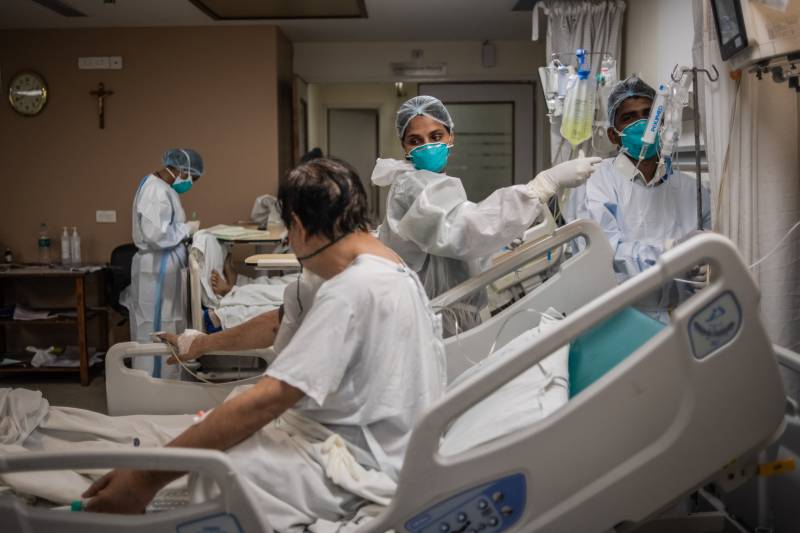Members of the Bay Area's Indian communities are mobilizing relief efforts to support India as one of the world's worst COVID-19 crises unfolds in the country, where more than 21 million cases and 230,000 deaths have been reported, and only 2% of the population has been fully vaccinated.
KQED's Brian Watt spoke about the crisis this week with Dr. Anurag Mairal, a professor of medicine at Stanford University and president of the Bay Area chapter of Sewa International, a Hindu humanitarian nonprofit.
The following is edited for length and clarity.
What are you hearing from your family and friends in India?
Mairal: The situation is really grim, with these really horrendous numbers, hundreds of thousands infected, thousands of people dying per day. And those are just the numbers that the country is able to capture. But the real numbers are expected to be much higher. Millions of people are probably getting infected. And there's not a single diaspora member of the Bay Area community, their family members, loved ones or friends, who have not been touched by this crisis. It's a pretty dire situation.
Is it simply a question of being overwhelmed, of people showing up with dire symptoms and not having a bed for them?
It's availability of beds for sure, but it's a number of things, like availability of oxygen in places that are real hotspots, which is something we dealt with last year in the U.S. But this is many orders of magnitude greater given the population and resource constraints in India. Not only in hospitals, but also in settings like homes, where many patients with mild and moderate symptoms could benefit from just having access to oxygen. But the supply chain has broken down, and demands just far exceed what India was ready for.

